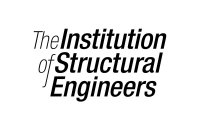Overview:
These two Eurocodes, together the 'head codes', provide essential information necessary for design to all the material codes which follow. Very differently from British codes, EN 1990 sets out the basis of design independently of structural material, covering load factors, load combinations and load arrangements, and explaining the principle of leading and accompanying variable actions. The separate parts of EN 1991 dealing with imposed loading, snow loading, wind loading, thermal effects, construction activities and accidental actions will be covered.
Aims & Objectives:
On completion of this course, delegates will:
- feel comfortable in working with Eurocodes
- be aware of suitable supporting material
- understand the principles of the Eurocode basis of design
- be aware of the coverage of the Eurocode 1 series of parts
- appreciate the differences from British codes on floor and roof loading
- understand the Eurocode method for wind loading
- understand the Eurocode method for temperature effects
- be able to work with materials Eurocodes with confidence.
On completion of the course, delegates will understand the principles of
the Eurocode method of design, and be fully aware of the approach to actions
on structures set out in the Eurocode 1 series.
Course Outline:
The course starts by introducing the overall style of Eurocodes, including symbols and suffixes, the Greek alphabet and the use of unfamiliar words - 'Eurospeak'. The principles of EN 1990 are explained and the key parts of EN 1991 introduced, with comparisons with British codes where appropriate.
EN 1991-1-2 (traffic loading) is not included, being the subject of separate courses.
- Introduction to course
Background, National Annexes, NDPs, NCCIs, PDs
- Understanding Eurocodes
Eurospeak, Greek alphabet, symbols, suffixes
- Basis of design - EN 1990
Basis and general principles for structural design, safety and serviceability, structural reliability, load factors, load combinations, load arrangements, load cases, permanent actions, variable actions, leading and accompanying variable actions, persistent and transient, factors.
Exercise 1: Ultimate load combinations
Exercise 2: Serviceability load combinations
- Imposed loading - EN 1991-1-1
Introduction to 1991-1-1 - densities, self weight, imposed loads; 1991-1-6 actions during execution, other parts not covered elsewhere.
Exercise 3: Load take-down
- Snow loading - EN 1991-1-3
Introduction to 1991-1-3, principal changes from BS 6399-3
- Accidental actions - EN 1991-1-7
Introduction to 1991-1-7, impact, blast, disproportionate collapse, risk analysis.
- Wind loading - EN 1991-1-4
Introduction to 1991-1-4, assessing wind loads
- Thermal actions - EN 1991-1-5
Introduction to 1991-1-5
Exercise 4: Temperature calculation
- Questions and discussion
The course is an interactive training day and consists of brief presentations interspersed with short exercises.
The course is new in 2009. Delegates will make the transition from knowing
nothing about Eurocodes to feeling informed and comfortable in starting to
work with them.
Intended For:
The course is intended for structural engineers with some experience of working with British codes of practice who wish to start making the change to Eurocodes.
No preparation is required, and no prior knowledge
of Eurocodes is assumed but delegates should bring a calculator, pencil and
eraser.








